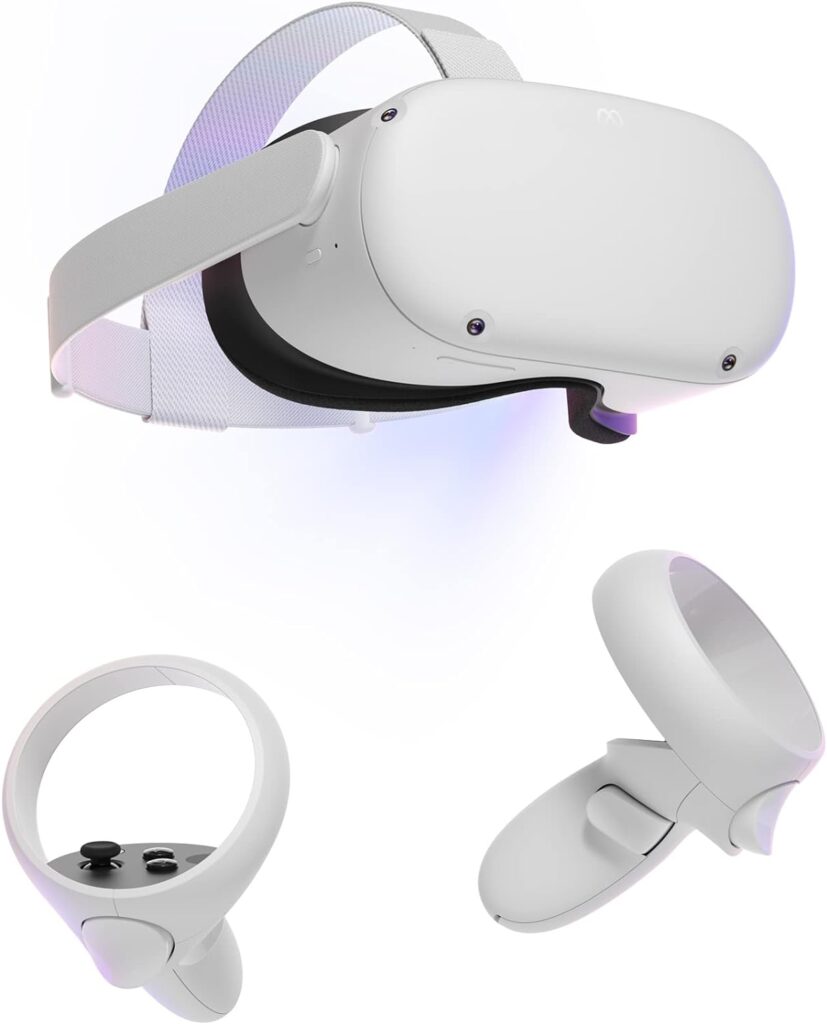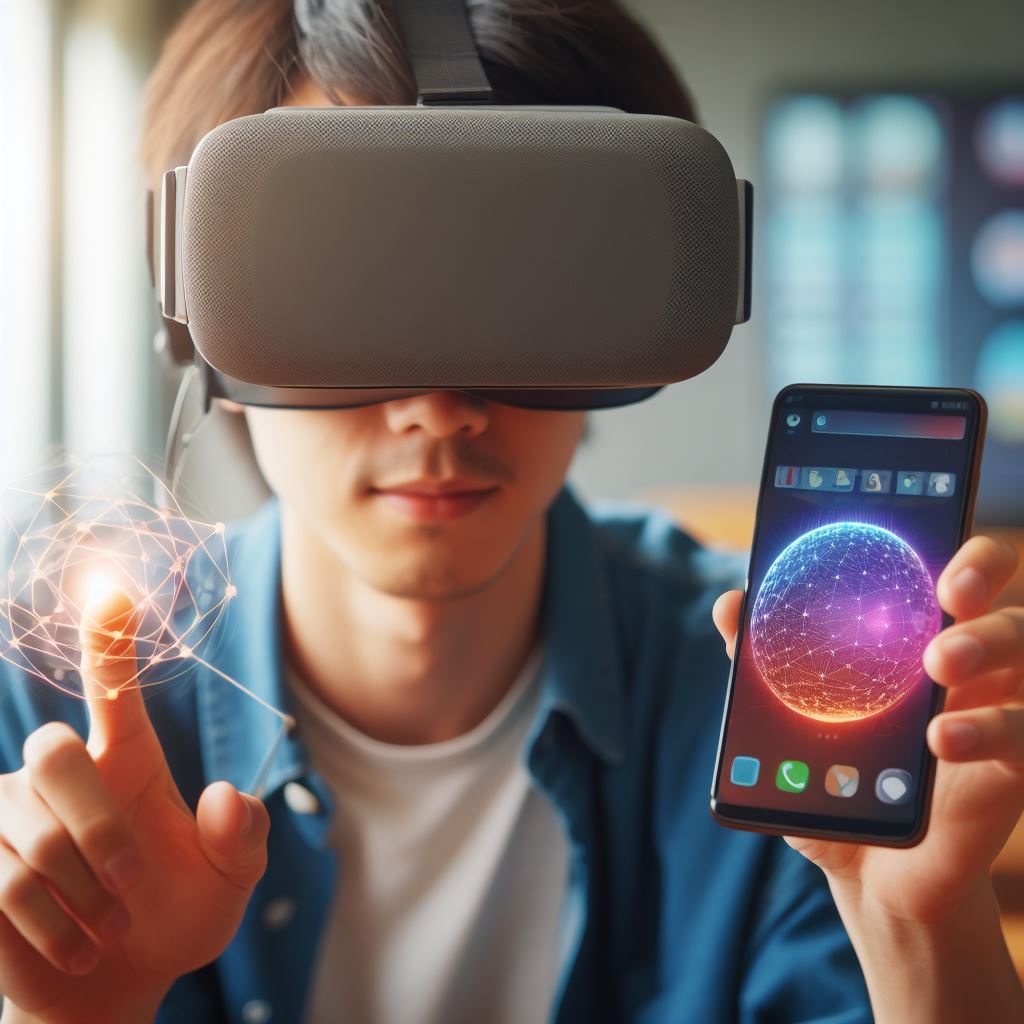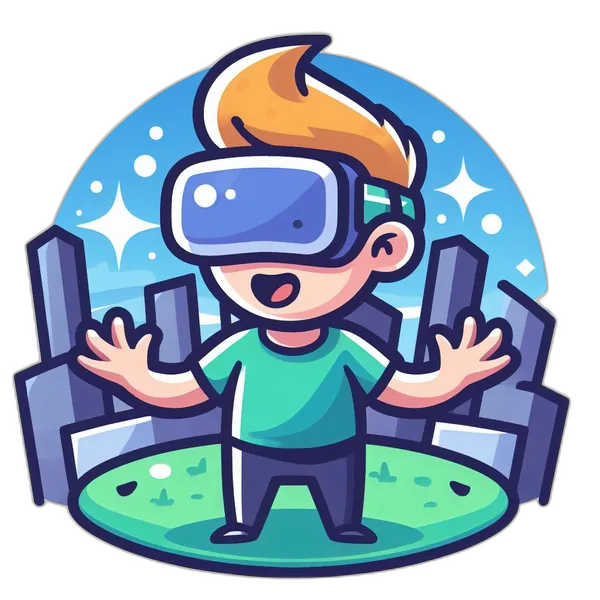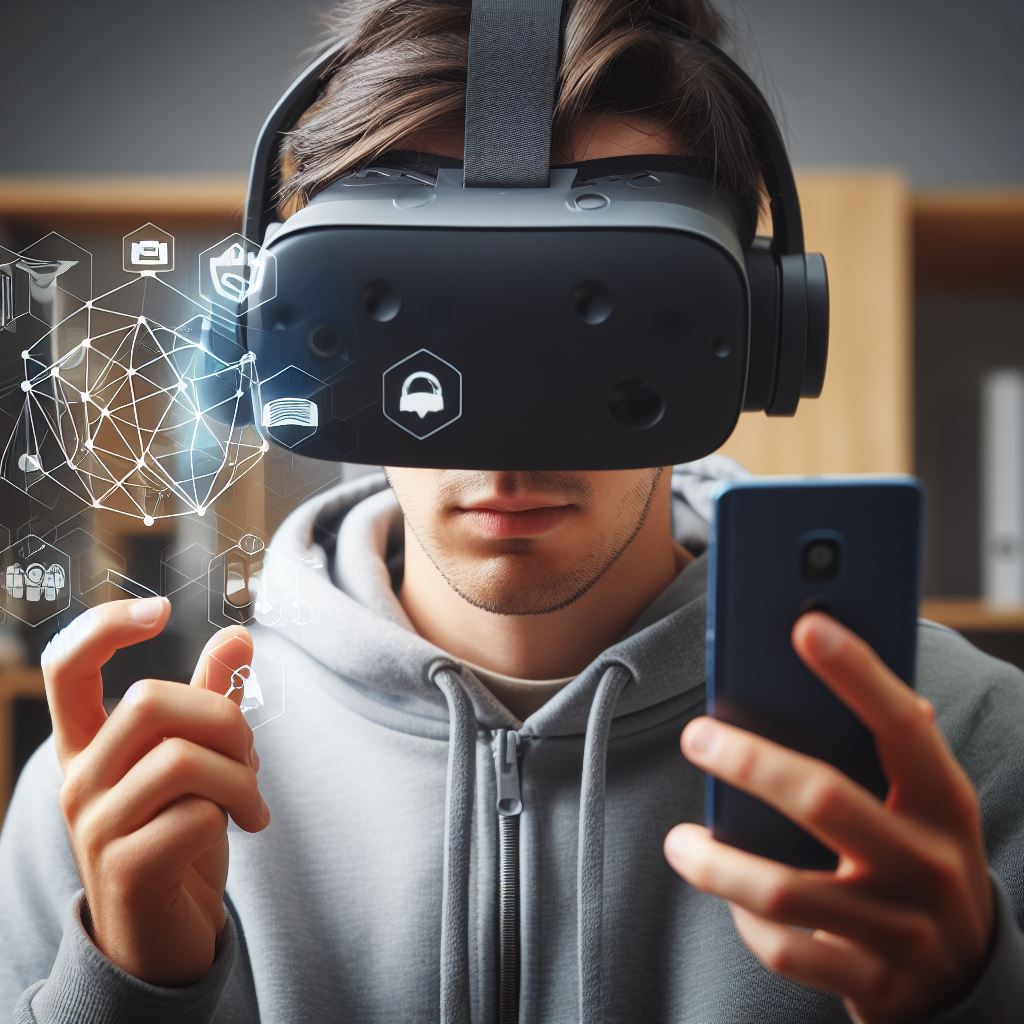Subscribe now for hand-picked best experiences, product discounts, and the latest VR trends, tips and tricks, straight to your inbox.
Key Takeaways
| Virtual Reality (VR) | Augmented Reality (AR) |
|---|---|
| A fully immersive digital world that replaces your physical surroundings | A virtual layer that enhances the real world with digital elements |
| Requires a head-mounted display that blocks out your vision | Can be experienced through a smartphone, tablet, or transparent glasses |
| Mostly used for gaming, entertainment, and education | Mostly used for navigation, information, and entertainment |
| Offers a high level of immersion and presence | Offers a high level of interactivity and convenience |
Introduction
Virtual reality and augmented reality are two terms that have been popular in the consumer tech space for years. Both are considered forms of extended reality, and rely on devices with screens such as a pair of glasses or goggles like the now-defunct Google Glass, the Meta Quest, and now Apple’s Vision Pro. While some devices offer strictly VR or AR features, many fall somewhere on the spectrum between the two and offer a mixed-reality experience.
With the availability of consumer VR devices, Apple’s forthcoming Vision Pro, and AR experiences on smartphones, the terms can get confusing. In this article, we will explain the differences between virtual reality, augmented reality, and mixed reality, and why they matter for the future of technology.
What is Virtual Reality?

Virtual reality (VR) is a fully generated digital world that supersedes your immediate external environment. You might be sitting in your living room, but while immersed in a VR headset, you can be on another planet, in a race car speeding around a track, or even at a meeting with coworkers.
Virtual reality headsets like the PlayStation VR 2 and Meta Quest 2 aren’t as immersive as the ones depicted in the science fiction worlds of Ready Player One or Snow Crash, but they still can offer an experience that feels like you’re in a different space from your physical location.
Virtual reality headsets have a built-in screen and use lenses to send each of your eyes a slightly different picture. There are also a number of sensors built-in to track your head position. Combined, they create the impression that you are surrounded by a three-dimensional reality that allows you to look around. When you move your head, your viewpoint shifts naturally.
Crucially, you typically need to use hand controllers to move around beyond a few steps in virtual reality, or to manipulate virtual objects.
Some of the benefits of virtual reality are:
- It offers a high level of immersion and presence, making you feel like you are actually in the virtual world.
- It can create realistic simulations of various environments and scenarios that would be otherwise impossible or impractical to experience in real life.
- It can provide entertainment, education, training, therapy, and social interaction opportunities for users.
Some of the challenges of virtual reality are:
- It requires expensive and bulky hardware that may not be accessible or comfortable for everyone.
- It can cause motion sickness, eye strain, headaches, and other health issues for some users.
- It can isolate users from their real surroundings and social contacts.
What is Augmented Reality?

Augmented reality (AR) is a virtual layer added on top of the real world. Instead of being totally immersed in computer-generated digital surroundings, you mostly see the real world with a few virtual additions. These can be anything from pop-up notifications and directions to where you’re going to an icon displaying the speed you’re skiing at or instructions on how to service an engine.
While there are AR goggles like the Microsoft HoloLens that overlay your field of view with floating apps, those are mostly used for commercial purposes. The most common way to experience augmented reality is through your smartphone or tablet. Apps like Pokemon Go, Snapchat, and Google Maps use your device’s camera to track your surroundings and visually overlay additional information on top of it.
Augmented reality can also be experienced through transparent glasses that let you see both the real world and the virtual elements. These devices are still in development or early stages of adoption, but they promise to offer a more convenient and seamless way to access AR content. One example is the Apple Vision Pro, which is expected to launch in early 2024.
Some of the benefits of augmented reality are:
- It offers a high level of interactivity and convenience, allowing you to access relevant information and features without interrupting your natural view.
- It can enhance your perception and understanding of the real world by providing contextual data and feedback.
- It can provide entertainment, information, navigation, and communication opportunities for users.
Some of the challenges of augmented reality are:
- It requires accurate and reliable tracking and rendering technologies that may not work well in all environments or conditions.
- It can cause distraction, confusion, privacy issues, and ethical dilemmas for some users.
- It can create unrealistic expectations or illusions that may not match the real world.
What is Mixed Reality?
Mixed reality (MR) is a term that encompasses both virtual reality and augmented reality, as well as anything in between. It refers to any technology that blends the physical and digital worlds in various ways and degrees. For example, some MR devices can switch between VR and AR modes, or display both opaque and transparent virtual objects.
Mixed reality can also be seen as a spectrum that ranges from the real world to the virtual world, with different levels of immersion and interactivity. The following table summarizes the main categories of mixed reality according to this spectrum:
| Category | Description | Example |
|---|---|---|
| Real World | The physical environment that you perceive with your senses | Looking at a tree |
| Augmented Reality | The real world enhanced with virtual elements that are anchored to it | Seeing a Pokemon on the tree through your phone |
| Augmented Virtuality | A virtual world enhanced with real elements that are captured from it | Seeing your hands or body in a VR game |
| Virtual Reality | A fully immersive virtual world that replaces the real world | Being on a different planet in a VR headset |
Mixed reality is an emerging and evolving field that offers many possibilities and challenges for the future of technology. It can create new ways of interacting with the world and each other, as well as new forms of art, entertainment, education, and work.
Conclusion
Virtual reality and augmented reality are two forms of extended reality that differ in how they create and present digital content to users. Virtual reality is a fully immersive digital world that replaces your physical surroundings, while augmented reality is a virtual layer that enhances the real world with digital elements. Both technologies have their own benefits and challenges, and they can also be combined or mixed in various ways to create different levels of immersion and interactivity.
As technology advances, we can expect to see more devices and applications that use VR, AR, or MR to create new experiences and opportunities for users. However, we should also be aware of the potential risks and implications of these technologies, such as health issues, privacy concerns, ethical dilemmas, and social impacts. Ultimately, we should use these technologies responsibly and wisely, and not lose sight of the real world that we live in.
Subscribe now for hand-picked best experiences, product discounts, and the latest VR trends, tips and tricks, straight to your inbox.



Leave a Reply